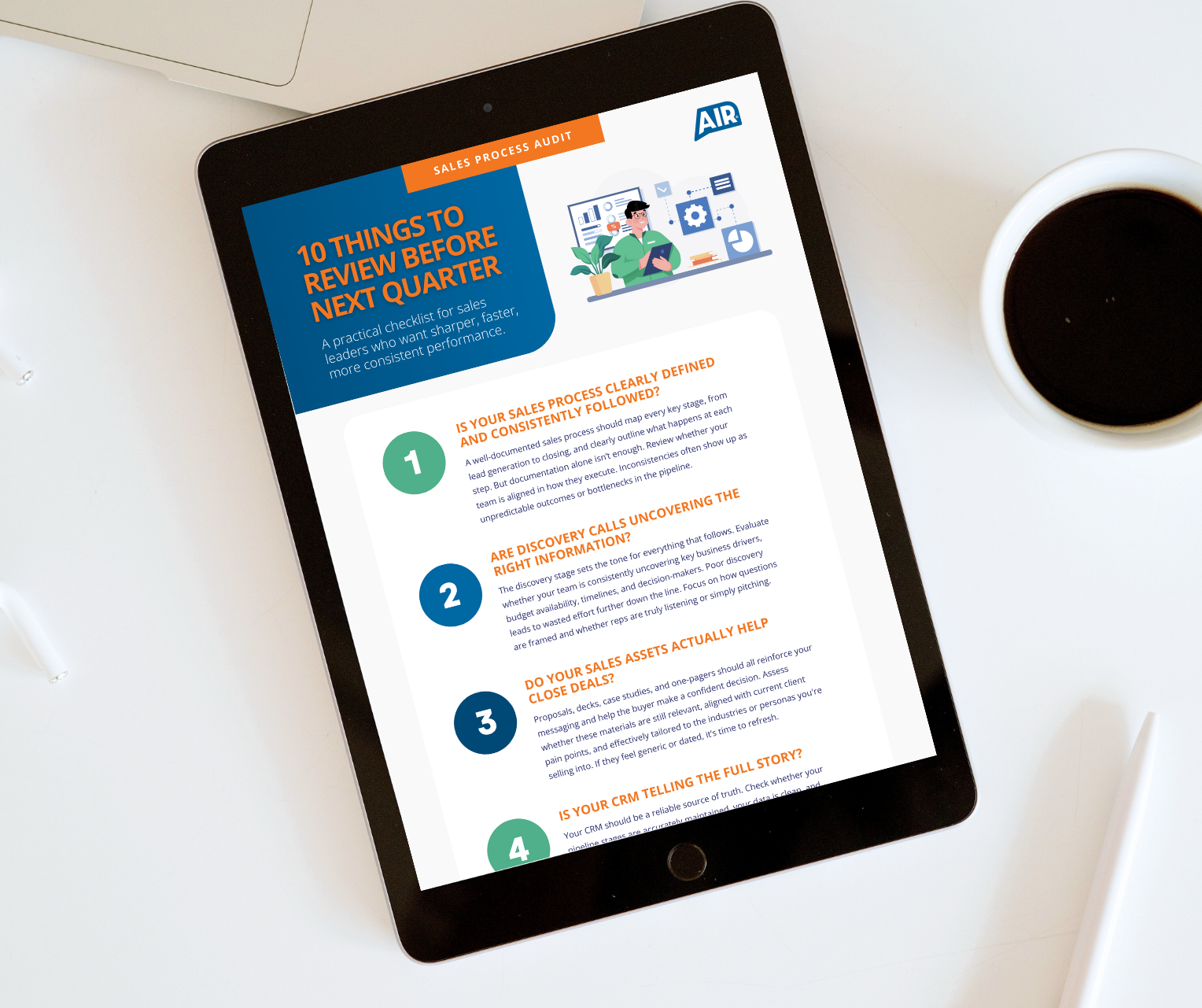Behind every underperforming sales team, there’s usually a broken process. Without structure and clarity, even the best teams struggle to build momentum and scale.
When done properly, a sales process audit reveals the hidden gaps holding back sales performance. From the hundreds of sales process audits we’ve delivered, five clear gaps appear time and time again:
1. Sales Conversations That Lack Structure
Too many salespeople are left to ‘freestyle’ their conversations, particularly in discovery calls. Without structure, messaging drifts, qualification suffers, and deals stall later in the process because the groundwork was never properly laid.
In every sales process audit, we assess how your team runs their conversations: the questions they ask, how they position value, and how well those conversations align with modern buying journeys.
2. No One’s Quite Sure What the Official Process Is
If your process isn’t clearly defined and documented, it doesn’t really exist. All too often, we find sales process documentation is outdated, inconsistent, or simply ignored. That leaves reps interpreting stages differently, pipeline reviews becoming subjective, and deals moving at uneven speeds.
A sales process audit digs into whether your documented process truly reflects what’s happening in real sales conversations – and, importantly, whether your team actually follows it.
3. Collateral That Doesn’t Close Deals
Outdated decks. Generic case studies. Content that speaks more to you than to your buyers. We see it all the time. Even worse, reps often don’t know what resources they have, or they’re forced to create materials on the fly.
We evaluate the quality, accessibility, and effectiveness of your sales collateral. The right tools should equip your team to have more impactful conversations – not hold them back.
4. Data That Can’t Be Trusted
If you can’t trust your data, you can’t forecast, coach, or scale effectively. We frequently uncover reporting issues: pipeline stages that don’t reflect reality, fields left incomplete, or inconsistent logging that makes conversion rates impossible to track accurately.
We dig into whether your data reflects true pipeline health, where deals are being lost, and which behaviours are driving wins. Without reliable data, decision-making is just guesswork.
5. Tech That Slows You Down
Sales technology should be an accelerator – but more often than not, it becomes a drag. We regularly find stacks bloated with overlapping platforms, poor integration, and underused features. The result? Reps spend more time managing systems than selling.
A sales process audit evaluates your stack from top to bottom: adoption, automation, and efficiency. The goal is to streamline and optimise – so tech becomes a genuine enabler of sales success.
Conclusion
If any of these gaps sound familiar, you’re not alone – most organisations experience at least one (if not all five). The difference lies in identifying them early and putting in place the structures, tools, and processes to fix them.
Ready to uncover the gaps in your sales process?
At Air, we specialise in helping businesses optimise sales performance through our Sales Process Audit.
This detailed assessment highlights strengths, uncovers gaps, and identifies opportunities for improvement – helping you increase conversion rates, shorten sales cycles, and drive sustainable growth.







